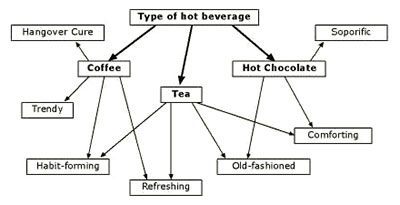
FAQs
FAQs
What is meant by the terms "theme" and "code"?
"Themes" are features of participants’ accounts that characterize particular perceptions and/or experiences, seen by the researcher as potentially relevant to the research question. Usually researchers choose to define themes where an interesting feature recurs across and/or within interviews (or other textual data sources). "Coding" is the process of identifying where themes occur in accounts and attaching labels (codes) to index them.
Can you have more than one template for a single study?
Yes, especially when your study includes distinct groups and you feel that their different perceptions and experiences may not be adequately captured though the same structure of themes. It may be that having initially produced separate templates for different groups, you judge that there is enough in common to merge them - as happened in our study of District Nurses’ and GPs’ perceptions of developments in community palliative care (King, Thomas and Bell, 2003). Alternately, you may feel it is most appropriate to keep separate templates as the basis for examining the data from each group. Another reason for using more than one template could be that you want to carry out two or more quite distinct analyses of the same set of data.
How do I know when I’ve reached the final version of my template?
You can never absolutely reach a "final" template, in the sense of it being one that is incapable of revision to useful effect. But on pragmatic grounds, you can apply a law of diminishing returns to recognise when the amount of time and effort involved in recoding the data to the nth iteration of the template is simply not repaid in terms of meaningful enrichment of your understanding. I cannot tell you in the abstract when you will reach this point, though in my experience it is usually quite easy to recognise. As a very crude rule of thumb, it is unlikely that if you have only made one set of substantive revisions to the initial template you will have achieved a "good enough" final template.
Can you have too many, or too few, levels of hierarchical coding in a template?
There is no hard and fast rule as to the most or least number of levels you should use. However, in practical terms, between three and five levels usually works out well - depending on how large and complex a data set you have. Too few levels and you are likely to end up with a superficial analysis. Too many and you can lose one of the main advantages of a template approach; its ability to help you - and your readers - gain an overview of the themes identified in your analysis.
When I write up a study that used TA, do I need to refer to every theme included in the template?
No; in fact in most circumstances you would be ill-advised to try to. Deciding which are the most salient themes is a key part of analysing and interpreting your data. You will find there are some themes that you need to devote considerable attention to, and others which you may not need to refer to at all – especially in a relatively short piece of writing like a journal article. See the technique: interpretation and writing up sections for more on this.
Do templates have to be produced in a linear "list" form?
No, you can produce them in whatever format you find most helpful. The big disadvantage of a purely linear format is that it is hard to show relationships between themes on it. The alternative to the linear "list" that I have seen most often is a "mind-map" style of layout. This is good where you want to indicate that a particular lower-order theme relates to more than one higher-order theme. A hypothetical example shows how the mind-map layout can display this more efficiently than a linear list. Imagine that a researcher has carried out a study of people’s experiences of drinking hot beverages. She has used "type of beverage" as a top level theme, with specific examples of hot drinks discussed by her participants as second level. She then has a range of experiential themes which relate to various combinations of beverages.
In a conventional list format the template might look like this:
1. Type of hot beverage
1.1 Tea
1.1.1 - Refreshing
1.1.2 - Habit-forming
1.1.3 - Old-fashioned
1.1.4 - Comforting
1.2 Coffee
1.2.1 - Refreshing
1.2.2 - Habit-forming
1.2.3 - Trendy
1.2.4 - Cures hangovers
1.3 Hot chocolate
1.3.1 - Old-fashioned
1.3.2 - Comforting
1.3.3 - Soporific
In a mind-map format, it would appear like this:

Which format you prefer is largely a matter of taste, but in the example it is certainly the case that the mind-map removes the need to repeat the third-level codes. Incidentally, if you are using NVivo to help you with your analysis, the Model Explorer function is very useful for producing mind-map style templates.
A couple of final points are worth bearing in mind regarding template format. Firstly, a template is not a theoretical model; it is a representation of the way you have gone about coding the data to identify themes in it. There is a danger with formats like the mind-map that you blur the distinction between template and model, and end up with something that does not function well as either. Of course it is absolutely fine to produce a template and then subsequently develop it into an explanatory model. Secondly, when you come to write up your study, you will almost certainly have to do so in a traditional form, such as a paper, report, or dissertation. One advantage of a well-designed linear template is that it can serve as a useful readymade structure for your Findings section.